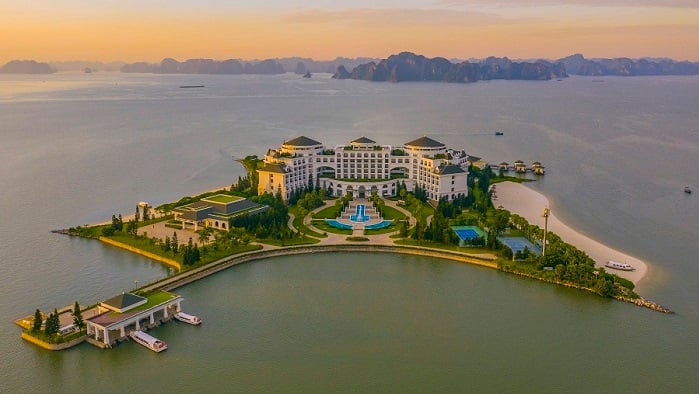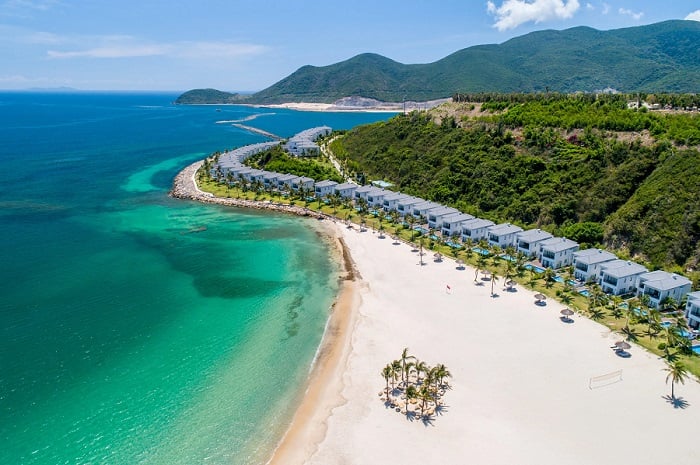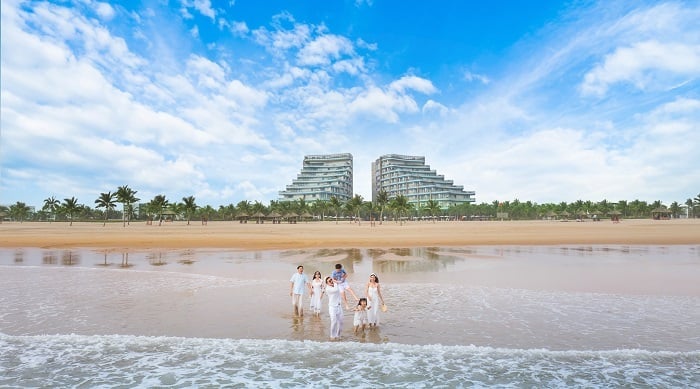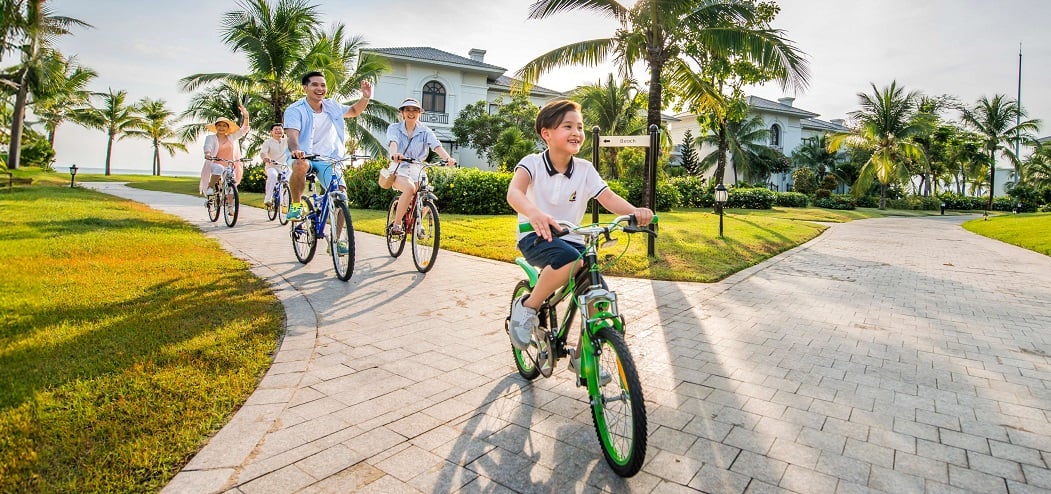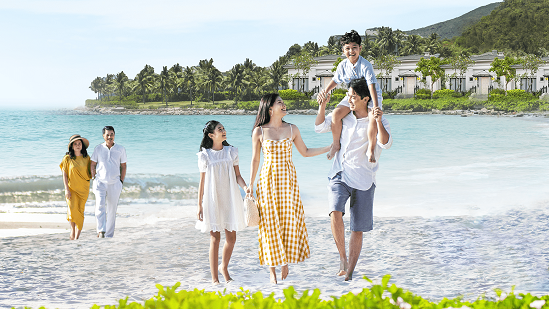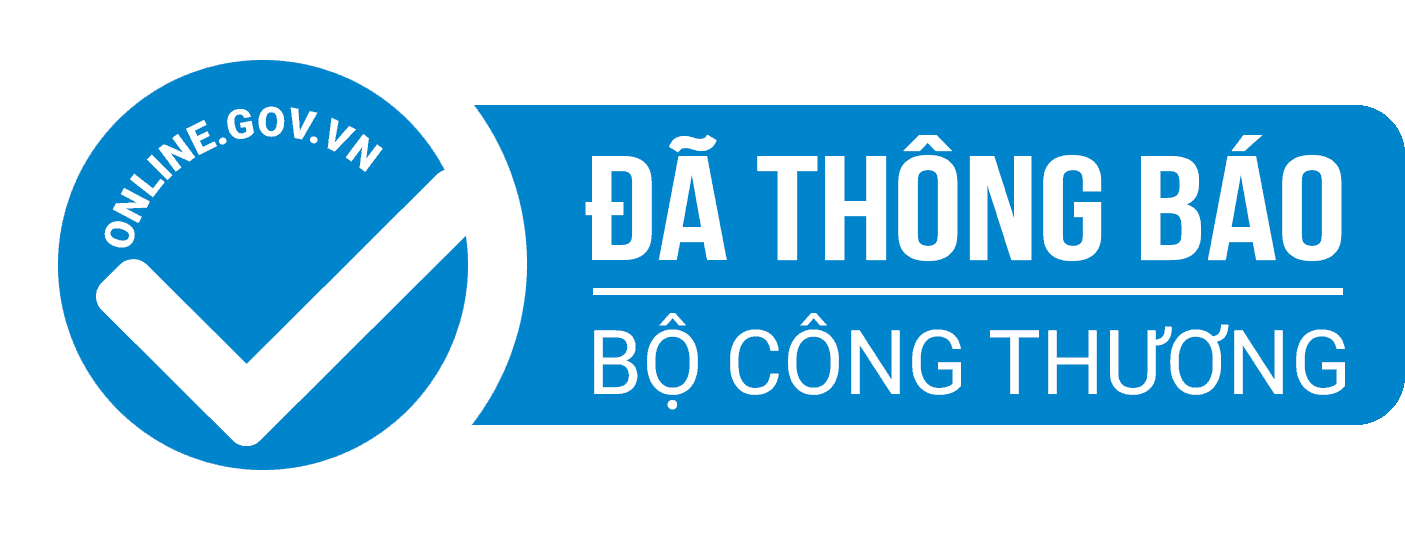
When it comes to Hanoi travel and tourism, tourists should not miss out on Tran Quoc Pagoda, the oldest pagoda in this city with a long-standing history. Being a sacred “gem” in the middle of West Lake, this religious site is an ideal spot for any cultural enthusiast in Vietnam’s capital.
1. Where is Tran Quoc Pagoda in Hanoi, Vietnam?
Tran Quoc Pagoda is located on a small islet of West Lake (Tay Ho District, Hanoi). Visitors can go inside the pagoda through its main gate on No. 46, Thanh Nien Street. Tran Quoc Pagoda worships Amitabha Buddha, Shakyamuni Buddha, and Avalokitesvara Bodhisattva. Additionally, there is an altar dedicated to Guan Yu, Guan Ping, Zhou Shang, and Anathapindika.
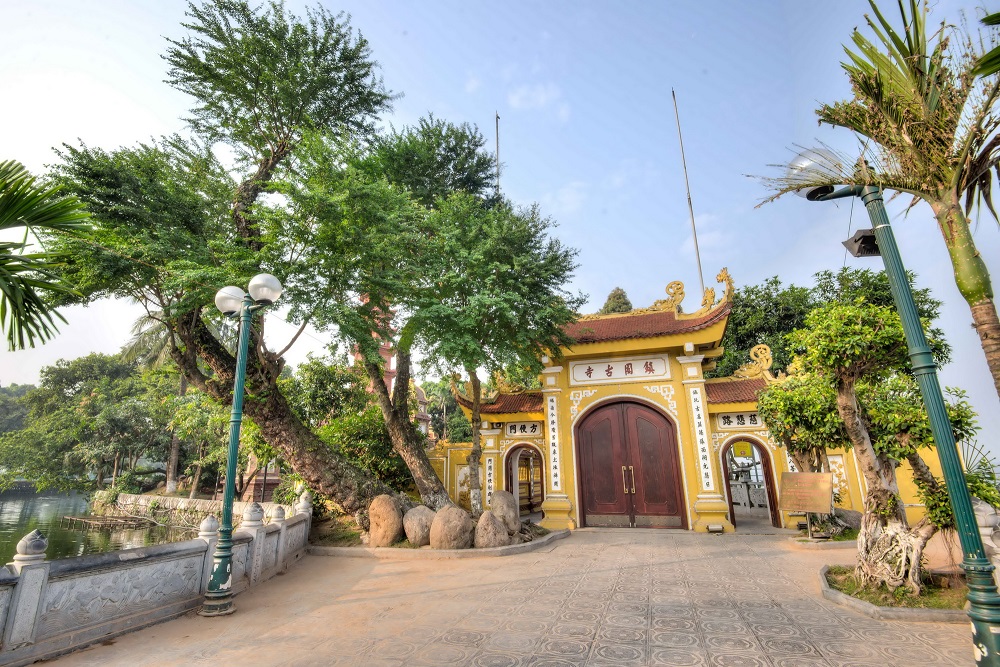
Tran Quoc Pagoda is also very close to many of Hanoi's top attractions, such as Ho Chi Minh Mausoleum and Temple of Literature. It serves as a convenient starting point to explore the city's cultural and culinary offerings. There are also plenty of beautiful sights for visitors to immerse themselves in near Tran Quoc Pagoda.
2. Things to know about Tran Quoc Pagoda
With outstanding features, Tran Quoc Pagoda can offer tourists a unique cultural and religious experience. Here are some of the things you might want to know about this destination.
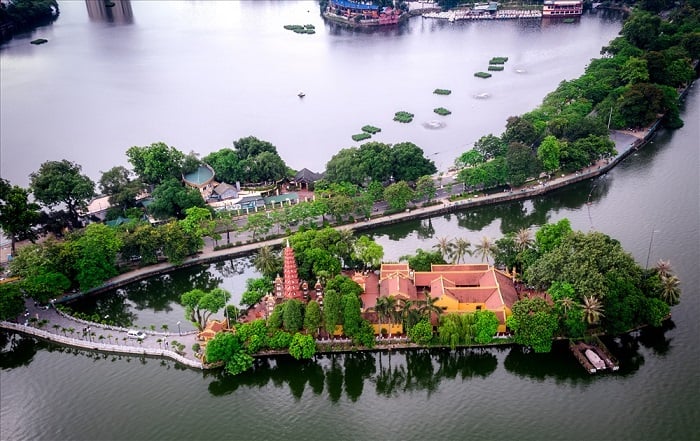
2.1. Long-standing history
With a history of 1,500 years, Tran Quoc Pagoda is the oldest pagoda in Hanoi. It was built in 541 in the Early Ly Dynasty, originally named Khai Quoc Pagoda. At that time, the pagoda was located near the banks of the Red River. In 1615, when the dyke collapsed, the pagoda was relocated to Yen Phu dyke in the Kim Nguu mound area.
The pagoda’s name was changed to Tran Quoc during the reign of King Le Hy Tong (1681 - 1705), with the hope that Tran Quoc Pagoda would be a place to help people repel natural disasters and also bring them a peaceful life. The name “Tran Quoc” is used to this day.
Fast forward to the Tran Dynasty, Tran Quoc Pagoda was deemed the capital of Buddhism. Today, it is considered an iconic symbol of Hanoi.
2.2. Marvelous architectural complex
Adhering to the strict principles of Buddhism, Tran Quoc Pagoda preserves the aesthetic beauty of Eastern architectural style.
The pagoda's 3000-meters-squared design is a harmonious blend of traditional elements, characterized by intricate woodwork, gracefully curved roofs, and delicate ornamentation. Each detail is a testament to the reverence for nature and the pursuit of spiritual balance that Buddhism embodies.
- The 11-Storey Stupa (Bao Thap)
As soon as you enter the pagoda, you will be greeted by a remarkable sight – The majestic red-brown tower standing proudly before you, known as the 11-storey Stupa or Bao Thap. This exquisite tower is a captivating masterpiece, comprised of eleven distinct stories, each adorned with six elegantly arched doorways.
Within these doorways, white gemstone statues of Amitabha Buddha stand in tranquil reverence, emanating an aura of serenity and enlightenment. The presence of the Buddha statues within the doorways serves as a reminder of the Buddha's teachings and the path to enlightenment.
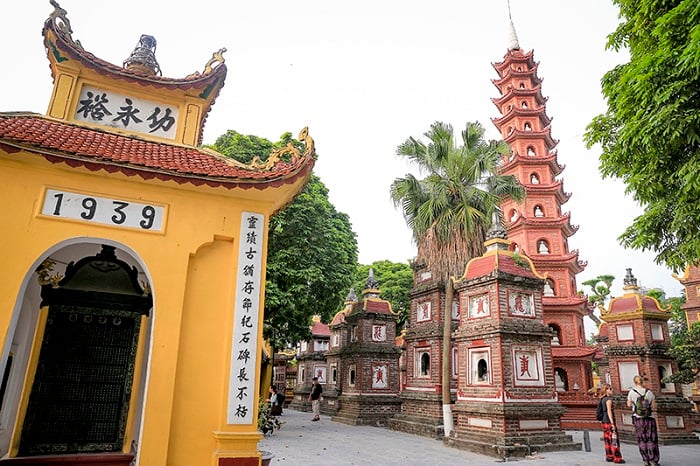
- The Front House (Tien Duong)
Upon entering the Front House of Tran Quoc Pagoda, you will see many unique statues. One of them is the statue of Shakyamuni Buddha made out of wood with glossy golden paint. This particular statue has earned the esteemed recognition of being voted as the most beautiful Lying Buddha statue in Vietnam.
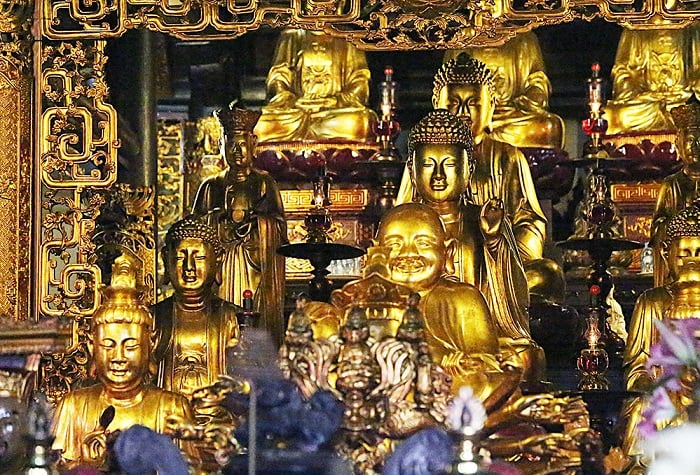
This masterpiece of a statue not only showcases the dedication and skill of the artisans who created it but also captures the essence of the Buddha's teachings – transcendence, serenity, and the pursuit of inner peace.
As you stand in the presence of this statue, you are invited to contemplate the profound significance of the Buddha's life and teachings, and perhaps find a moment of stillness and reflection amidst the spiritual ambiance of Tran Quoc Pagoda
- The Incense Burning House (Nha Thieu Huong)
The Incense Burning House is one of the bustling focal points within Tran Quoc Pagoda, drawing a steady stream of visitors and creating an atmosphere of vibrant activity.
Here, you can burn incense and other votives to pray for good luck and health. The act of burning incense symbolizes the purification of intentions and the elevation of prayers to higher realms. It is a cherished ritual that you will want to try.
- The Upper House (Thuong Dien)
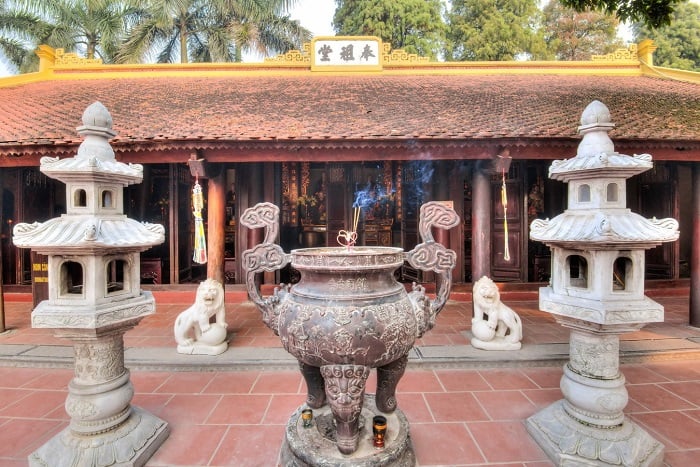
Behind the Upper House, there is a bell post that was designed as a 3-compartment wooden house roofed with red tiles. To the right of the bell post is the Stele House, an equally intriguing feature within the pagoda's premises.
These structures, the bell post and the Stele House, together form a captivating tableau of architectural and historical significance.
- The Stele House (Nha Bia)
The Stele House preserves 14 steles engraved with poems of famous scholars at that time. The steles also record the history of Tran Quoc Pagoda, including a full description of the pagoda’s renovations throughout dynasties. Thanks to this information, the next generations can get a better understanding of Tran Quoc Pagoda history from the very first day.
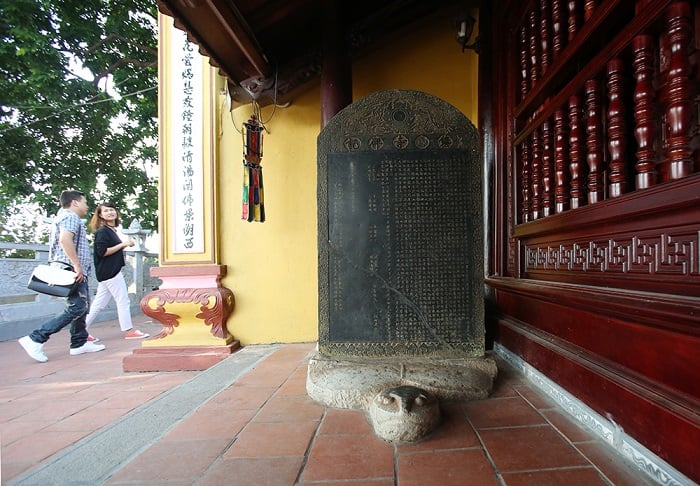
Another highlight tourists should not miss out on when visiting Tran Quoc Pagoda is the Bodhi tree.
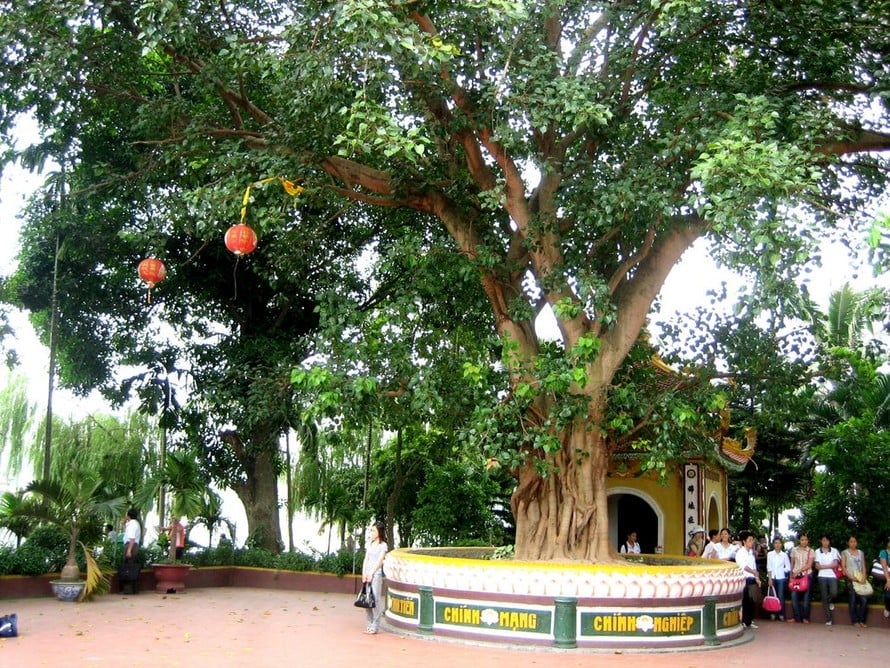
The Bodhi tree in Tran Quoc Pagoda was a gift from India's former President Rajendra Prasad to Vietnam in 1959. It was extracted from the Great Bodhi Gaya tree, where Shakyamuni Buddha sat and practiced more than 25 centuries ago. Do not miss the chance to stand in the shade of this sacred tree and be entranced by an aura of tranquility and reverence.
Articles for you:
- Noi Bai International Airport: The BIGGEST airport in Northern Vietnam
- Bat Trang Pottery Village: Experience exciting hands-on pottery making
- Hanoi coffee shops: 15+ café that will satisfy your eyes and taste buds
3. A handy guide for your spiritual trip to Tran Quoc Pagoda
Tran Quoc Pagoda opening hours:
- Regular days: 8 AM - 4 PM
- Lunar New Year’s Eve: all night
- The 1st and 15th days of every lunar month: 6 AM - 6 PM
Tran Quoc Pagoda entrance fee: Free
Tran Quoc Pagoda dress code: Formal non-revealing clothing (No shorts, mini skirts or tank-tops)
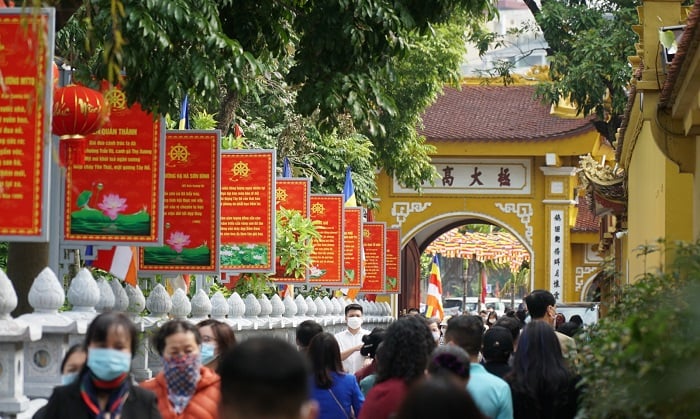
Tran Quoc Pagoda is most crowded on the 1st and 15th days of the lunar month, especially during Tet holiday. Therefore, it is suggested that you visit the pagoda during these times to have the fullest religious experience. On the other hand, for a more calming and relaxing visit, you can come here on regular days.
4. The specific directions to Tran Quoc Pagoda in Hanoi
Tran Quoc Pagoda is located in Tay Ho District, a central district of Hanoi, so tourists can reach here easily. If you are planning to take a bus, the two bus routes recommended are number 33 (Yen Nghia – Xuan Dinh Bus Station) and number 50 (Long Bien – My Dinh National Stadium). You can also drive your personal vehicle or take a taxi. Most Hanoi locals are familiar with Tran Quoc Pagoda location, so feel free to ask them about the way to get here if you need any help.
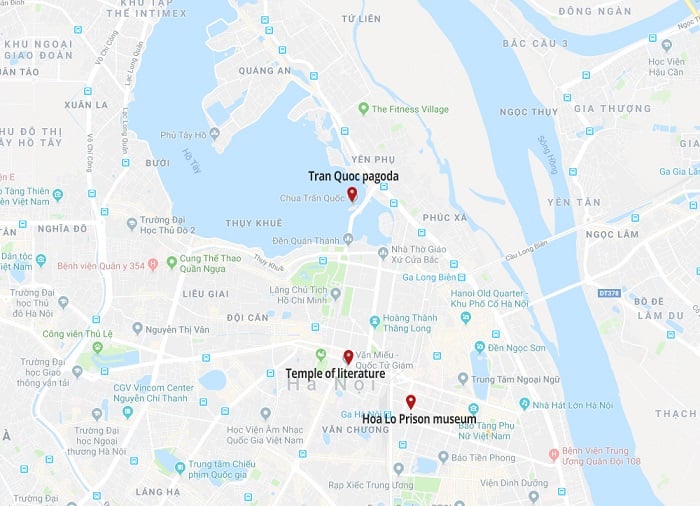
And, in terms of taxi options, XANH SM Taxi stands out as a commendable choice.
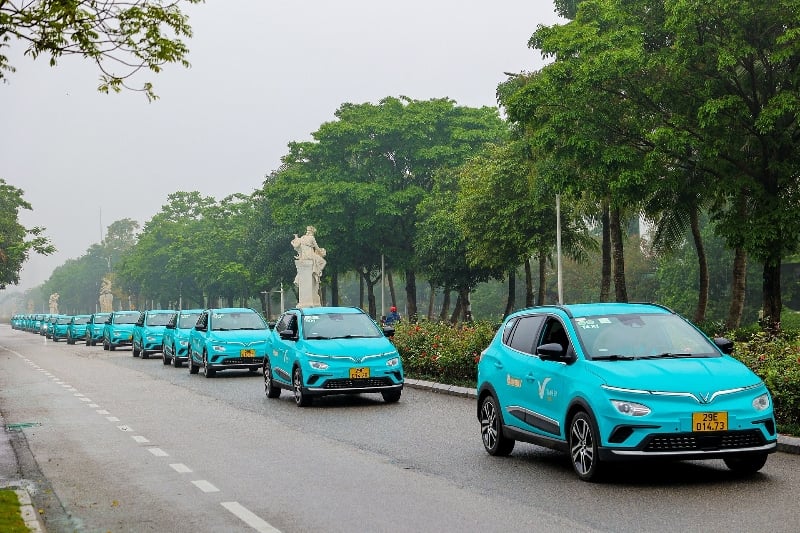
XANH SM Taxi - the first electric taxi company in Vietnam, operated entirely with VinFast electric cars. Customers who travel by XANH SM taxi not only receive an excellent standard of service, but they also join XANH SM in its efforts to reduce vehicle emissions and safeguard the environment. XANH SM provides standard and luxury taxi services and airport taxis with attractive promotions. Customers can easily book a taxi in 04 ways:
(1) Call the national hotline 1900 2088
(2) Wave on the street like a traditional taxi
(3) Book on the Taxi Xanh SM app. Click HERE to download the app
(4) Use the beVinFast service on the multi-service customer platform BE to book Xanh SM taxi
You may also like:
- Rainy season in Vietnam: The BEST guide for your future backpacking tour
- Vietnamese Reunification Day: Date, History & Celebration Activities
- orthern Vietnam: 12 top-rated destinations to add to your 2023 bucket list
In addition to Tran Quoc Pagoda, there are also many other tourist attractions nearby to visit on your Hanoi tour: Hoan Kiem Lake, Ho Chi Minh Mausoleum, Hanoi Old Quarter, etc. If you want to have a more exciting indoor experience, VinKE & Vinpearl Aquarium are highly recommended.

Being one of the most modern aquarium systems in Vietnam, Vinpearl Aquarium offers more than 30,000 freshwater and saltwater marine specimens for tourists to discover. VinKE, on the other hand, is an ideal educational playground for your kids with many job simulation games.
>>> Book tickets of VinKE & Vinpearl Aquarium in advance to grab the best deals!
With a long-standing history, impressive architecture, and remarkable cultural values, Tran Quoc Pagoda is definitely one of the top Hanoi tourist attractions that you should not miss out on. Visiting this religious site, tourists can immerse themselves in the calming nature and pray for their loved ones.


